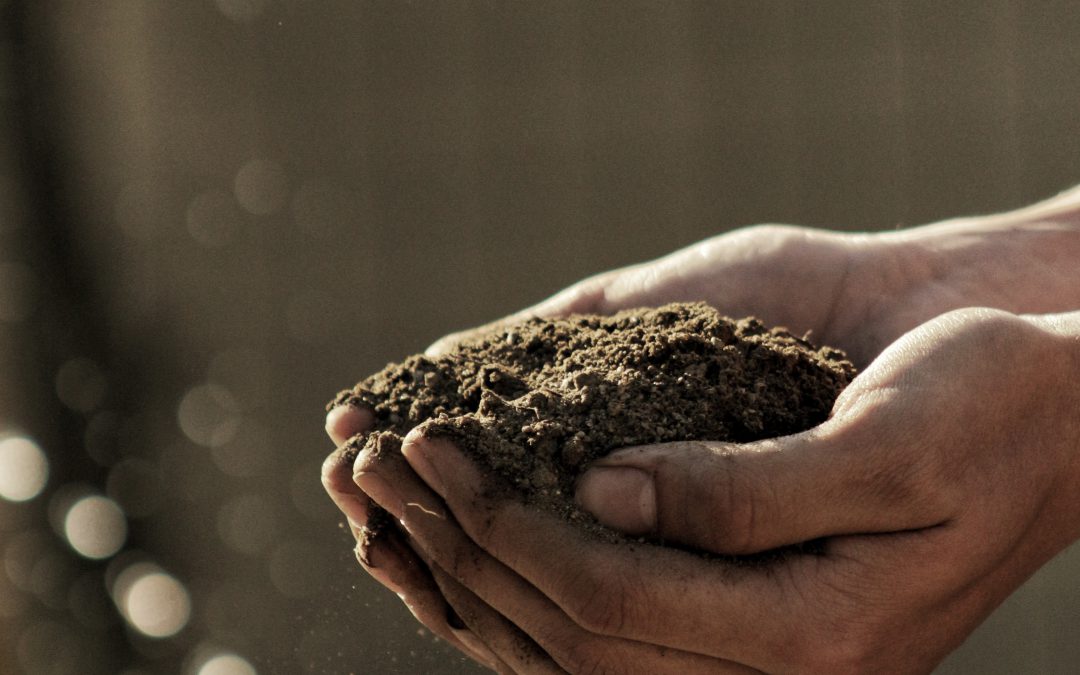
by Mary Salinas | Sep 7, 2019
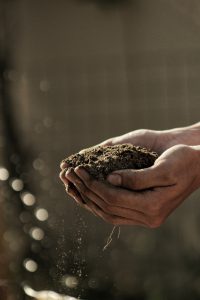
Photo courtesy of Gabriel Jimenez at Unsplash.com.
Gardeners have always known, down to their bones, that getting down and dirty in the soil is good for you. My grandmother was a staunch believer in the beneficial, calming effect of pulling weeds and digging in the garden when she was angry or frustrated with life.
Pulling weeds, digging up plants, planting new plants and seeds, mixing in good compost to a new landscape bed – these are joys that bring gardeners into intimate contact with soil and all the abundant life within. Gardeners love that smell of good fertile soil. As do nature lovers of all sorts. Hikers love the earthy smell as they tromp through the woods – especially after a nice rain when the fragrance is especially fresh and sweet.
What causes the aroma that we are experiencing? Much of it is bacteria. Good bacteria. Healthy soil is a complex ecosystem containing a great biodiversity of species of plants, fungi, animals and bacteria. And much research is being done to identify and learn about the thousands of species living under our feet.
Scientists are now suggesting that a fatty acid found in the soil-based bacterium Mycobacterium vaccae may alleviate stress and stress related disorders in humans. Gardeners have always known there was something about the soil that was good and healthy for us. Now, we have the science to back it up!
Happy Gardening!
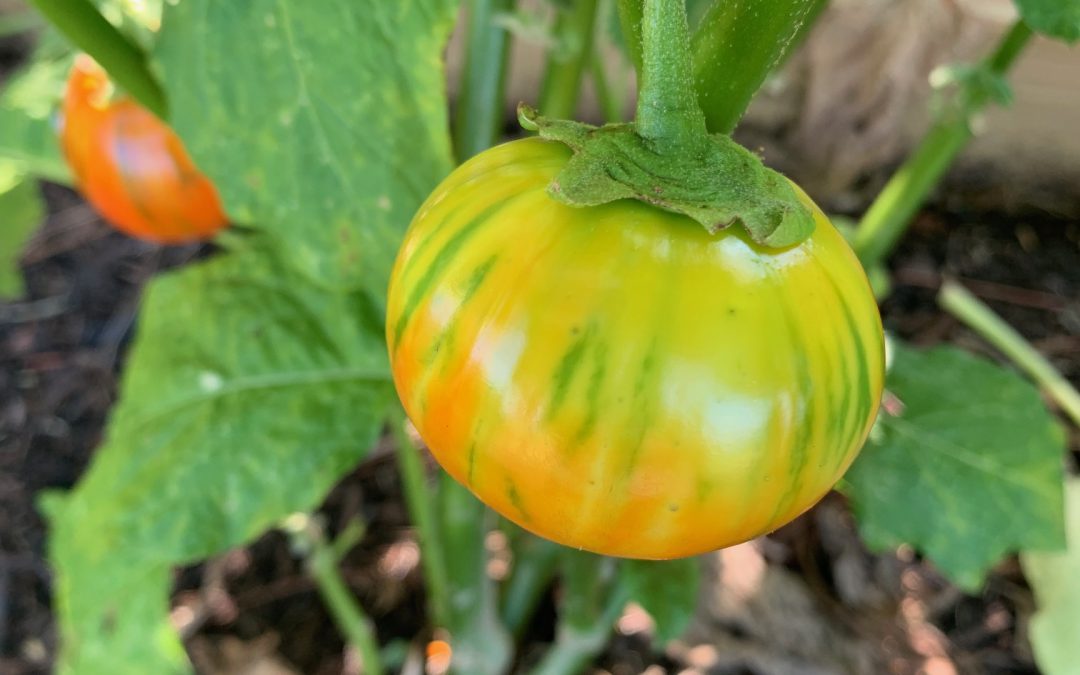
by Mary Salinas | Aug 1, 2019
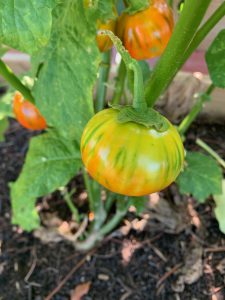
Turkish Orange Eggplant. Photo credit: Mary Salinas, UF/IFAS Extension.
Mid-summer in the Panhandle vegetable garden is prime time to be offering up a great crop of eggplant. This is one of my favorite summertime fruits to grow! (Yes, it is botanically speaking a ‘fruit’ and not a ‘vegetable’.)
Many home gardeners are familiar with the standard ‘Black Beauty’ variety that produces large plump fruit, but there are many other eggplant varieties to try. Take a look at Heirloom Eggplant Varieties in Florida to get some ideas. Gardeners can access dozens of varieties through online seed vendors. Eggplants can be dark purple, purple-striped, pale purple, white, green and even orange. They come in all shapes and sizes and all are delicious to eat, j make sure you learn when to harvest the variety you choose for optimum enjoyment. For example, the Turkish Orange illustrated in the photo should be picked before it turns all orange to avoid any bitterness.
In the panhandle, plant eggplant anytime February through August for harvest late spring through fall. Eggplant is in the nightshade (Solanaceae) family along with tomato, pepper, and potato. Keep that in mind when you are planning your garden for next year to avoid planting members of the same family in the same spot year after year, which encourages recurring disease and pest issues.
Eggplant loves rich soil and benefits from regular fertilization with commercial fertilizers or applications of compost. Eggplant is considered a long season crop and one can expect harvest to begin around 90-110 days after planting seed or 75-90 days if setting out transplants. Eggplant is, in general, more drought tolerant than tomato but it is still good practice keep them consistently moist and avoid letting them completely dry out. Also, while eggplant is self-pollinating, it is an excellent pollinator plant, as many species are attracted to the pretty blooms.
Eggplant is also relatively easy to grow, not generally requiring pruning or staking. Many of the same pests of tomato and pepper will also be attracted to eggplant. Be on the lookout for tomato hornworm and other caterpillar pests. For natural pest control methods, consult Natural Products for Managing Landscape and Garden Pests in Florida
For more information:
Florida Vegetable Gardening Guide
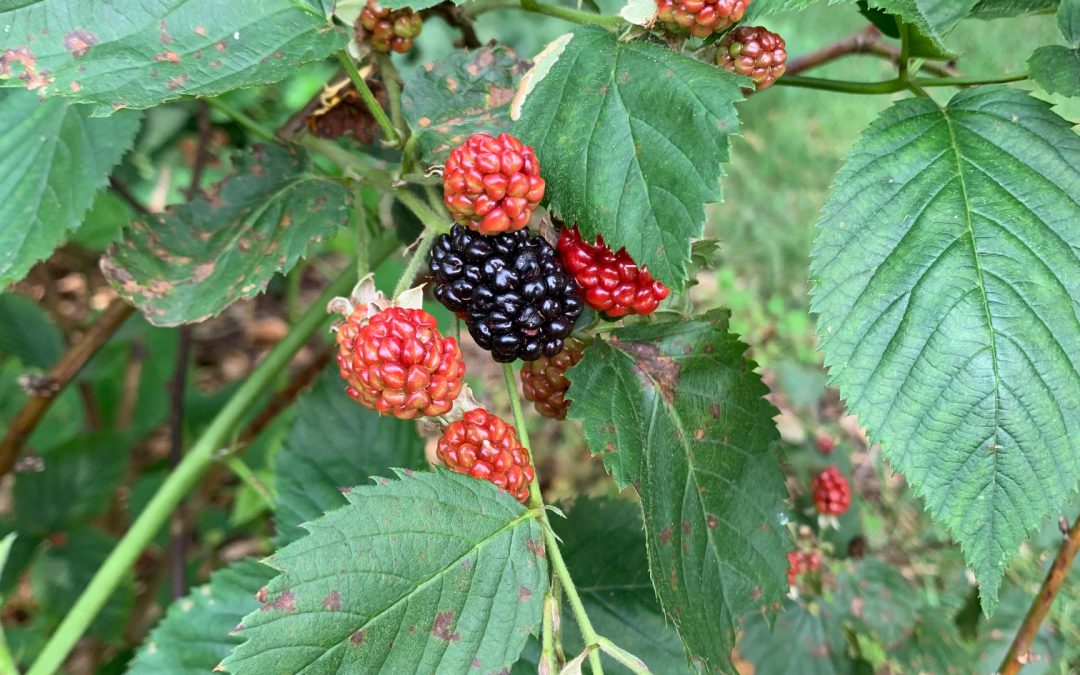
by Mary Salinas | Jul 11, 2019
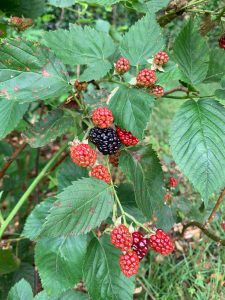
Ripening thornless blackberries. Photo credit: Mary Salinas, UF/IFAS Extension.
To everyone’s delight, the blackberries are ripening in the Santa Rosa County Extension demonstration garden. The blackberry patch is a reliable perennial that continues to provide fresh berries year after year. Before you decide against them because you don’t want a thorny and painful hazard in your landscape, remember that there are thornless blackberry cultivars with fruit just as tasty as the old-fashioned thorny blackberry varieties. However, it is important to take care and make sure that the variety or cultivar you choose is adapted to our Florida climate and chill hours.
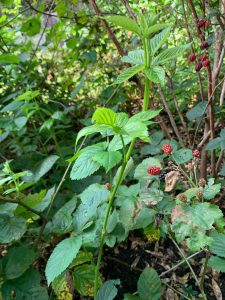
Blackberries bloom and produce fruit on last year’s canes. This year’s growth (the bright green shoot in the front center) will produce next year. Photo credit: Mary Salinas, UF/IFAS Extension.
You can choose a blackberry variety from your local nursery or propagate some plants from a favorite blackberry grown by a friend or neighbor (with permission, of course). Methods of propagation include stem cuttings, root cuttings, tip layering and removing the suckers that arise from the roots.
Plant when the weather is cooler in winter and choose a sunny spot with good soil. Frequent irrigation is crucial during the establishment period and when the fruit is produced. Weed control with organic or plastic mulches is also important to the success of your blackberry patch.
For more information on blackberry cultivars, propagation and growing success please see the University of Florida publication The Blackberry.
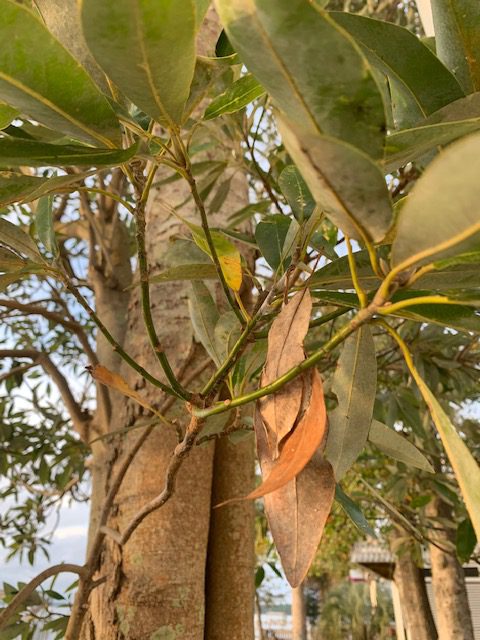
by Mary Salinas | Feb 26, 2019
You never know what you’ll find when you start looking closely in your garden. I was puzzled as to why there were three dead leaves hanging together on my sweetbay tree when all the other leaves looked so nice and healthy. On further investigation, I found a cocoon was made by binding the leaves together and it was firmly attached to the branch with silk.
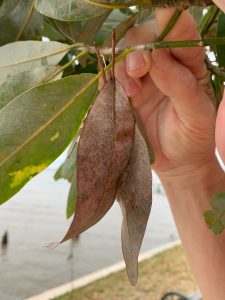
The hanging dead leaves are a perfect hiding place for the cocoon of the sweetbay silkmoth. Photo credit: Mary Salinas.
This is the cocoon of the Sweetbay silkmoth, Callosamia securifera. Adult females lay their eggs on the native sweetbay tree, Magnolia virginiana, as the caterpillars only feed on sweetbay leaves. The trees tolerate having a few leaves eaten so there is no need to pick off the caterpillars if you find them. Local birds may do that for you as they rely on an abundance of caterpillars to feed their baby birds.
See photos of this beautiful moth with more details on its life cycle.
And then explore Gardening with Wildlife on UF/IFAS Gardening Solutions.
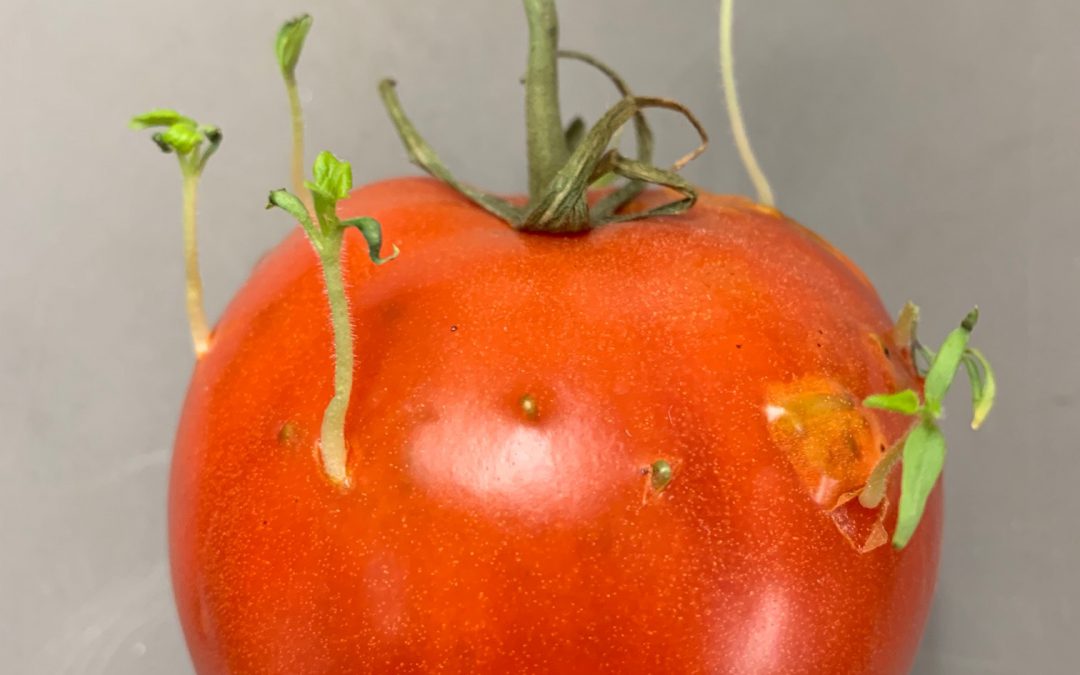
by Mary Salinas | Jan 14, 2019
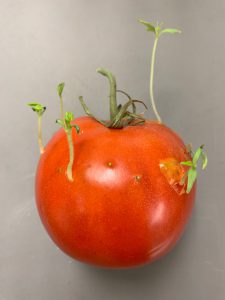
Tomato with sprouts. Photo credit: Mary Salinas, UF/IFAS Extension.
What in the world is happening to the tomato in this photograph? Are those hostile parasitic plants taking over the tomato?
No, nothing so sinister. You are just seeing anxious new tomato plants sprouting from the seeds inside the tomato.
A naturally-occurring plant hormone normally prevents seed inside of fruit from sprouting too soon. But sometimes the piece of fruit is hanging around a bit longer than nature planned and the hormone that prevents the seed sprouting is depleted. So, the seeds start to sprout and look like squiggly white worms inside the tomato. With enough time, they pop through the skin and emerge as little tomato plants.
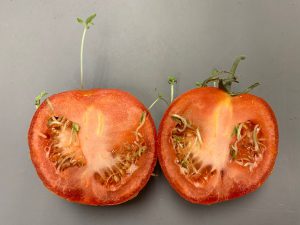
Halved tomato with interior sprouts. Photo credit: Mary Salinas, UF/IFAS Extension.
This phenomenon also commonly happens in pepper, citrus, apple, jackfruit, avocado and pear.
Yes, you can separate the little plants and plant them on their own if you would like.
For more information on growing tomatoes:
Tomatoes in the Florida Garden
Florida Vegetable Gardening Guide












